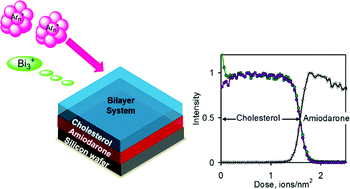Determination of the sputtering yield of cholesterol using Arn+ and C60+(+) cluster ions
Abstract
The sputtering yield of cholesterol films on silicon wafers is measured using Arn+ and C60+(+) ions in popular energy (E) and cluster size (n) ranges. It is shown that the C60+(+) ions form a surface layer that stabilizes the film so that a well-behaved profile is obtained. On the other hand, the Arn+ gas clusters leave the material very clean but, at room temperature, the layer readily restructures into molecular bilayers, so that, although a useful measure may be made of the sputtering yield, the profiles become much more complex. This restructuring does not occur at room temperature normally but results from the actions of the beams in the sputtering process for profiling in secondary ion mass spectrometry. Better profiles may be made by reducing the sample temperature to −100 °C. This is likely to be necessary for many lower molecular weight materials (below 1000 Da) to avoid the movement of molecules. Measurements for cholesterol films on 37 nm of amiodarone on silicon are even better behaved and show the same sputtering yields at room temperature as those films directly on silicon at −100 °C. The yields for both C60+(+) and Arn+ fit the Universal Equation to a standard deviation of 11%.


 Please wait while we load your content...
Please wait while we load your content...